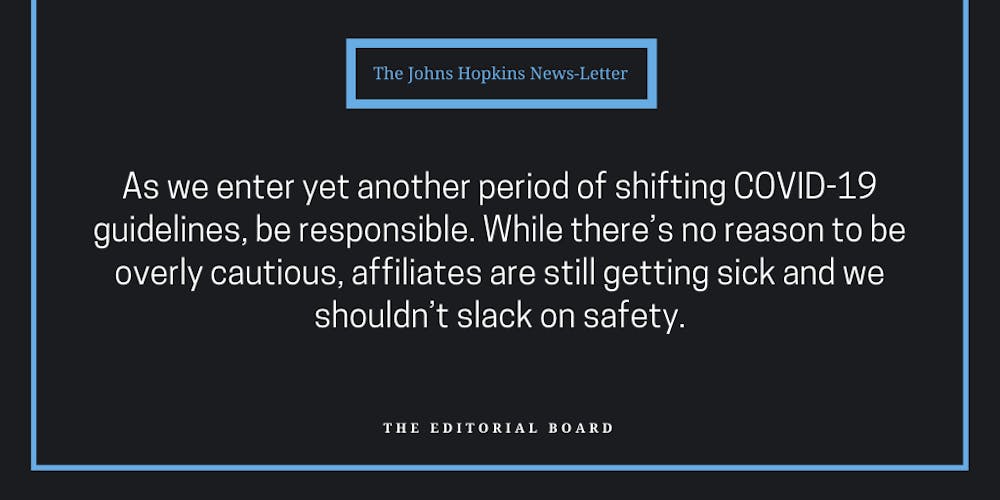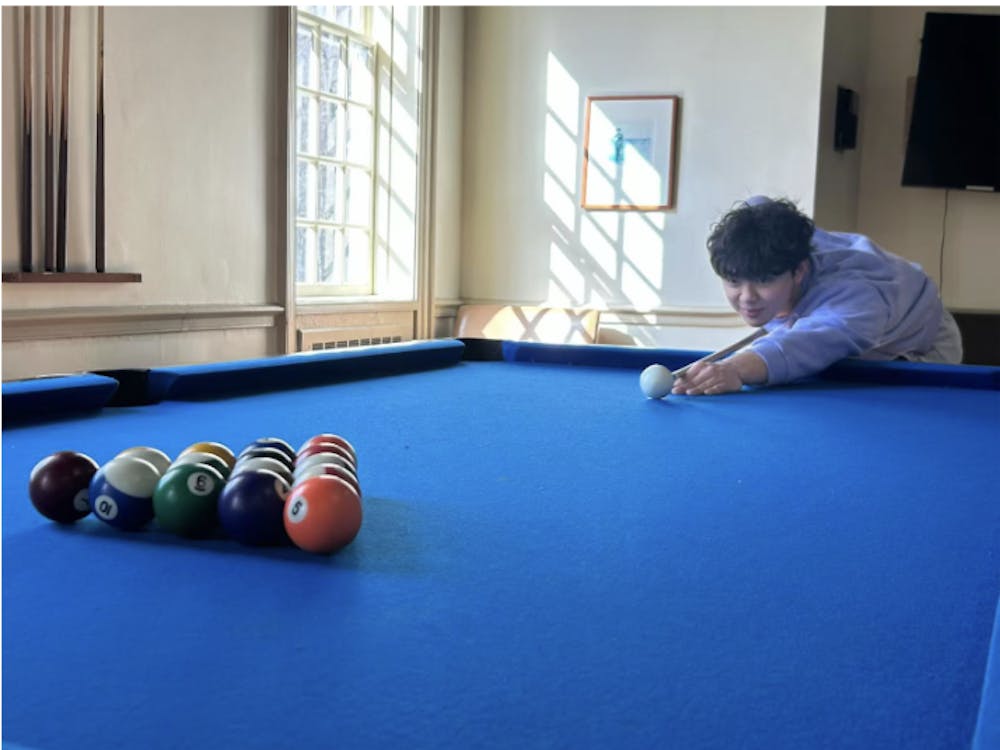It’s now March, which means it’s been just about two years since the COVID-19 pandemic permanently impacted our lives. Around this time in 2020, students were sent home from campus without a clue about when we’d ever return as fear, lockdowns and uncertainty swept across the country.
Thankfully, we’re in a much better place than we once were. We know a lot more about the virus itself; most of us are double-vaccinated and boosted; and we’ve gotten into the swing of weekly asymptomatic testing. And hey, we’re actually back on campus!
We believe that the University has been adequately cautious in setting health guidelines for students, as demonstrated by its recent decision to maintain its mask mandate on campus. Notably, Hopkins has taken a careful approach compared to the Centers for Disease Control and Prevention (CDC), which updated its guidelines last week, dropping indoor masking recommendations for most of the United States. Following the CDC update, Baltimore City and nearby universities also lifted their indoor masking requirements.
Even so, we are starting to see campus open up in other ways: Though masking remains, Hopkins has relaxed the frequency of COVID-19 tests to once-weekly, Prodensity health checks are no more and dining hall capacity limits will be lifted later this month.
While we’re relieved that COVID-19 is less dominant in our lives and though we know much more about the virus than we did two years ago, it’s evolving every day and its long-term consequences are unclear. We do know that long COVID, whose common symptoms include fatigue and brain fog, can be disabling, and it can affect anyone who has had the virus, regardless of severity.
We can’t forget that COVID-19 is still a threat, especially for those at higher risk. Things are far from “back to normal” for immunocompromised individuals, adults over 60 and children under 5. This continues to be a source of stress for Hopkins affiliates and their loved ones who fall under these categories.
We now find ourselves in a gray area, with guidelines always changing and conflicting messages coming from different institutions. What should our masking protocol be when out and about in Baltimore? Should we keep Prodensity notifications on or delete the app forever?
The Editorial Board is in no way qualified to decide what’s right or wrong, and we don’t claim to be. However, we do emphasize the importance of remaining conscientious of those around us.
As we enter yet another period of shifting COVID-19 guidelines, be responsible. While there’s no reason to be overly cautious, affiliates are still getting sick and we shouldn’t slack on safety.
Even though we are not completing daily health checks, no one should be coming to class sick. The drive to keep studying and remain productive might make you feel as though you can’t miss class, but when showing symptoms of COVID-19, your health and the wellness of those around you is more important.
However, the health of our community is not solely the responsibility of students. Currently, it is at the discretion of individual professors to excuse absences when students feel unwell. With different professors and class modalities, students might experience vastly different accommodations and expectations for class attendance.
This only further perpetuates a culture where work-life balance and wellness are not prioritized at Hopkins. No one should feel pressured to attend classes and complete assignments while sick with COVID-19.
We’ve already called on the University to instate more standardized guidelines when it comes to excused absences and remote learning. Unfortunately, Hopkins has not adequately responded to these concerns. The University must play an active role in setting these parameters for professors as rules are relaxed.
As students, all we can do is be as considerate as possible and use our personal judgment. If you feel sick, you should get tested, social distance and avoid large gatherings. Give yourself the time to get better. For the foreseeable future, continue to be mindful of others and don’t forget to bring your masks to class. After all, they work.

















